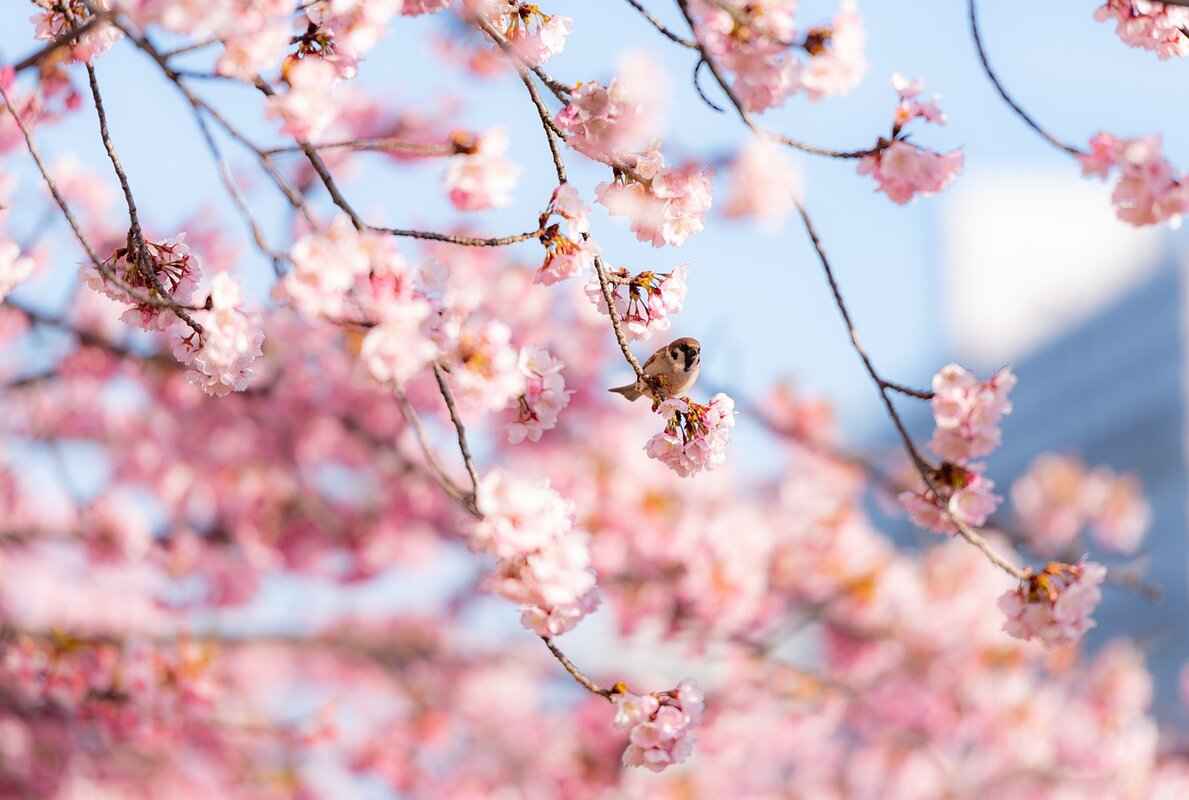During Hanami, Japan’s enchanting cherry blossom festival, the air is filled with the sweet scent of blooming sakura and the delightful aroma of traditional foods. This vibrant celebration is not just about admiring the beautiful blossoms; it also revolves around the exquisite culinary experiences that enhance the festivities. As families and friends gather beneath the pink canopies, they indulge in a variety of traditional and modern treats that reflect Japan’s rich cultural heritage.
Traditionally, Hanami picnics feature an array of delectable dishes that are both visually appealing and delicious. Bento boxes are a staple, offering a balanced meal with rice, fish, pickled vegetables, and seasonal delights. These boxes are crafted with care, showcasing the artistry of Japanese cuisine. Additionally, seasonal fruits such as strawberries and cherries are popular, adding a refreshing touch to the festivities.
Sakura mochi is a beloved treat that symbolizes the essence of Hanami. This sweet rice cake, wrapped in fragrant cherry blossom leaves, not only delights the taste buds but also represents the fleeting beauty of the sakura season. Its unique flavor, a blend of sweet and earthy, makes it a must-try during the festival.
The preparation of sakura mochi is an art form in itself. The process begins with soaking glutinous rice overnight, followed by steaming it to achieve the perfect texture. Once the rice is ready, it’s shaped around a core of red bean paste and wrapped in preserved cherry leaves, adding a distinctive aroma. Each region in Japan boasts its own variation, making it a delightful treat to explore.
- Glutinous rice – the base of the mochi, providing a chewy texture
- Red bean paste – a sweet filling that complements the rice
- Preserved cherry leaves – imparting a unique flavor and aroma
During the cherry blossom season, many local shops and specialty stores offer sakura mochi. Some of the best versions can be found in traditional confectionery shops, especially in areas renowned for their cherry blossoms, such as Ueno Park in Tokyo or Hanami Park in Kyoto.
In addition to sakura mochi, a variety of other foods enhance the Hanami experience. Dango, a traditional rice dumpling, is often skewered and enjoyed with friends. It comes in various flavors, including sweet soy sauce and sakura, making it a delightful treat to savor under the blossoms.
Bento boxes are not just meals; they are a representation of Japanese culinary artistry. Each box is carefully arranged to be visually appealing, often featuring seasonal ingredients that mirror the beauty of the cherry blossoms. This thoughtful presentation enhances the overall Hanami experience, making each picnic a feast for the eyes as well as the palate.
Creating a Hanami bento box at home is a fun way to celebrate the season. Start with a base of fluffy rice, then add a variety of colorful ingredients such as grilled fish, pickled vegetables, and seasonal fruits. The key is to balance flavors and colors, making the bento both delicious and visually stunning.
Dango plays a significant role in Hanami celebrations. Traditionally served on skewers, these rice dumplings are often enjoyed with family and friends, fostering a sense of togetherness during the festivities. Their chewy texture and sweet flavors make them a favorite among festival-goers.
Among the various flavors of dango, sweet soy sauce and sakura are particularly popular during Hanami. These flavors not only tantalize the taste buds but also enhance the overall experience of enjoying food amidst the cherry blossoms.
To truly immerse yourself in Hanami, visit some of Japan’s most famous parks. Shinjuku Gyoen and Chidorigafuchi are renowned for their breathtaking cherry blossoms and vibrant picnic atmosphere. Many local festivals also celebrate Hanami with food stalls offering seasonal delicacies, providing a perfect opportunity to indulge in these culinary delights.

What Are the Traditional Foods for Hanami?
During the enchanting season of Hanami, when cherry blossoms bloom across Japan, food becomes an integral part of the celebration. Families and friends gather under the pink canopies to enjoy not just the beauty of nature, but also a variety of traditional dishes that enhance this festive atmosphere. The culinary offerings during Hanami reflect Japan’s rich cultural heritage and seasonal ingredients, making the experience both delicious and memorable.
One of the most iconic aspects of Hanami is the assortment of traditional foods that are prepared for picnicking. These foods are often colorful, visually appealing, and designed to be enjoyed outdoors. Here are some of the most popular dishes:
- Bento Boxes: A staple during Hanami, bento boxes are carefully arranged meals that include rice, vegetables, and protein. The presentation is often artistic, showcasing the vibrant colors of seasonal ingredients.
- Sakura Mochi: This sweet rice cake is wrapped in a cherry blossom leaf, offering a unique flavor that celebrates the season. It is not only delicious but also symbolizes the beauty of the cherry blossoms.
- Dango: These chewy rice dumplings are typically served on skewers and come in various flavors, including sweet soy sauce and sakura. Dango is a favorite treat during Hanami and adds a delightful texture to the picnic spread.
- Seasonal Fruits: Fresh fruits like strawberries and cherries are often included in Hanami picnics, providing a refreshing and sweet contrast to the savory dishes.
Each of these foods holds significance during Hanami, not just for their taste but also for the memories they create. Sharing these traditional dishes with loved ones under the cherry blossoms enhances the sense of community and celebration.
Sakura mochi stands out as a beloved treat during Hanami. Its unique combination of flavors and textures makes it a must-try for anyone participating in the festivities. The sweet rice dough encasing red bean paste, coupled with the aromatic cherry blossom leaf, creates a delightful experience that is both nostalgic and celebratory.
Bento boxes are not just meals; they are a reflection of Japanese culinary artistry. Each box is a carefully curated selection of ingredients that celebrates seasonal produce. The variety offered in a bento box allows picnickers to sample multiple flavors, enhancing the overall experience of dining outdoors.
Dango plays a significant role in Hanami celebrations. Served on skewers, these rice dumplings are easy to share among friends and family, making them perfect for a picnic setting. The different flavors of dango, including sweet soy sauce and matcha, cater to diverse palates, ensuring that everyone can find something they enjoy.
To truly immerse yourself in the Hanami experience, visiting parks renowned for their cherry blossoms is essential. Locations such as Ueno Park in Tokyo and Maruyama Park in Kyoto not only offer stunning views of blooming sakura but also host food stalls where you can find these traditional dishes.
In conclusion, the traditional foods enjoyed during Hanami are a vital part of the celebration, enhancing the enjoyment of this beautiful season. From bento boxes to sakura mochi, each dish contributes to the festive atmosphere, making memories that last a lifetime. Whether you’re picnicking under the cherry blossoms in Japan or recreating the experience at home, these culinary delights are sure to bring joy and connection.
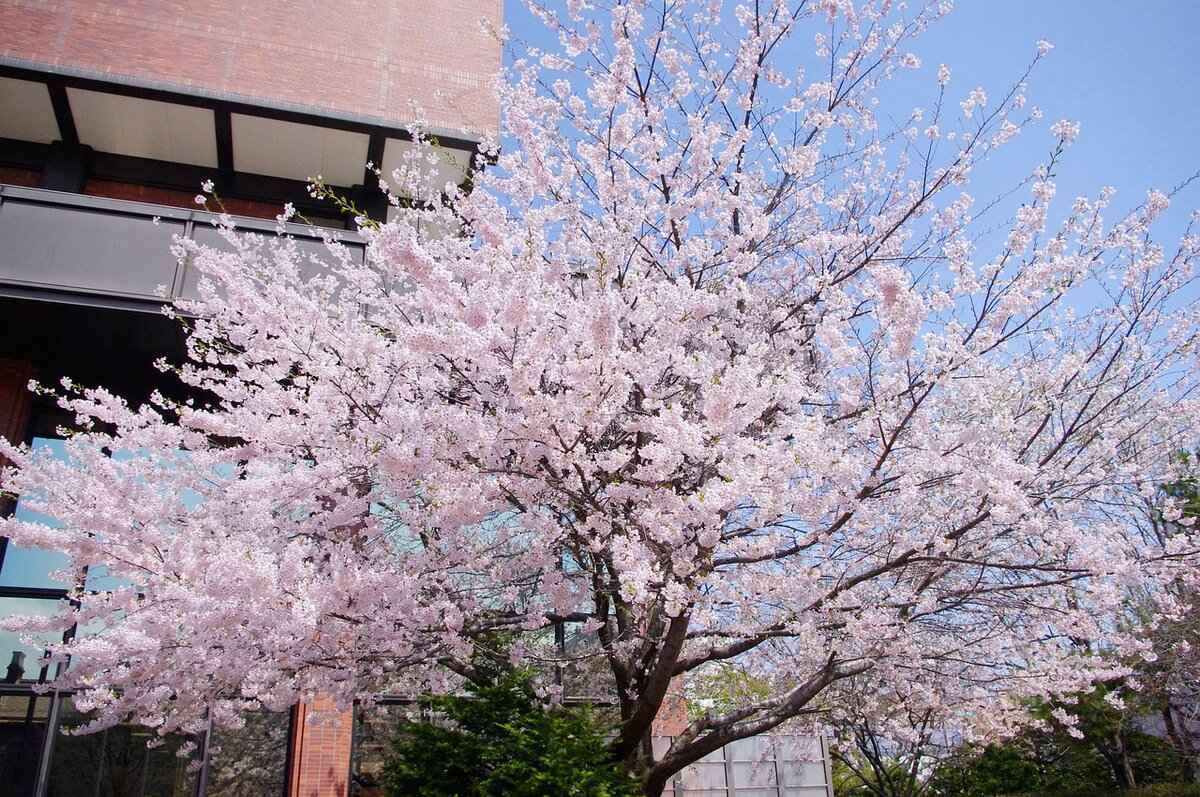
Why is Sakura Mochi Popular During Hanami?
Sakura mochi, a delightful sweet rice cake enveloped in fragrant cherry blossom leaves, holds a special place in Japanese culture, particularly during the Hanami season. This cherished treat not only tantalizes the taste buds but also embodies the spirit of spring, making it a staple during cherry blossom viewing festivities.
The significance of sakura mochi during Hanami extends beyond its delicious flavor. Traditionally, this confection symbolizes the beauty and transience of cherry blossoms, which bloom for only a short period each year. The act of enjoying sakura mochi while surrounded by blooming cherry trees connects people to the fleeting nature of life, a concept deeply rooted in Japanese philosophy.
The preparation of sakura mochi is a meticulous process that highlights traditional Japanese culinary techniques. The key ingredients include glutinous rice, which is steamed and pounded to create a chewy texture, and sweet red bean paste, which provides a rich contrast in flavor. The rice cake is then wrapped in salted cherry leaves, imparting a subtle floral aroma that enhances the overall experience.
Across Japan, various regions have developed their own unique interpretations of sakura mochi. For instance, the Kanto style features a round shape filled with red bean paste, while the Kansai style is typically oval and may include a layer of white bean paste. These regional variations reflect local tastes and customs, making sakura mochi a versatile treat.
During the cherry blossom season, numerous local shops and specialty stores across Japan offer sakura mochi. In cities like Tokyo and Kyoto, you can find artisanal versions crafted by skilled confectioners. Additionally, many convenience stores stock this seasonal delicacy, making it accessible to both locals and tourists alike.
Sakura mochi is not just a sweet treat; it plays a vital role in cultural celebrations. During Hanami, families and friends gather in parks to enjoy picnics, and sakura mochi is often included in these festive spreads. Its presence at such gatherings fosters a sense of community and shared appreciation for the beauty of nature.
As people gather to admire the cherry blossoms, the act of sharing sakura mochi adds to the joy of the occasion. The soft, chewy texture combined with the fragrant leaves creates a unique sensory experience that enhances the overall atmosphere of Hanami. This treat serves as a reminder to savor the moment, much like the fleeting beauty of the blossoms themselves.
While sakura mochi is a highlight, it is often enjoyed alongside other traditional foods during Hanami. Bento boxes, filled with seasonal ingredients, and dango, sweet rice dumplings, are popular choices that create a well-rounded culinary experience. Together, these foods celebrate the arrival of spring and the joy of being outdoors.
In conclusion, sakura mochi is more than just a sweet treat; it is a symbol of the beauty and transience of life, deeply intertwined with Japanese culture during the Hanami season. Its unique flavors, cultural significance, and the joy it brings to gatherings make it a beloved delicacy that enhances the cherry blossom experience.
How is Sakura Mochi Made?
During the enchanting season of cherry blossoms, Hanami festivities bring people together to celebrate the beauty of nature. One of the most beloved treats enjoyed during this time is sakura mochi, a sweet delicacy that captures the essence of spring. Understanding how sakura mochi is made not only reveals the artistry involved but also highlights the cultural significance of this traditional Japanese confection.
Sakura mochi is a traditional Japanese rice cake made from glutinous rice and typically filled with sweet red bean paste. What makes it particularly special is the wrapping of the rice cake in preserved cherry leaves, imparting a subtle fragrance that enhances the flavor of the treat. This delightful combination of textures and tastes makes sakura mochi a favorite during the Hanami season.
The preparation of sakura mochi involves a meticulous process that can vary by region, yet the core elements remain consistent. Here’s a step-by-step breakdown:
- Soaking the Rice: Start by soaking glutinous rice in water for several hours, usually overnight. This step is crucial as it ensures the rice becomes soft and sticky, which is essential for forming the mochi.
- Steaming the Rice: After soaking, the rice is drained and then steamed until fully cooked. The steaming process allows the rice to achieve the perfect texture, making it pliable and easy to mold.
- Making the Dough: Once the rice is cooked, it is pounded into a smooth and elastic dough. This can be done using a traditional mortar and pestle or a modern food processor. The goal is to create a smooth texture that will hold together well.
- Preparing the Filling: While the dough is being prepared, the sweet red bean paste (anko) can be made or purchased. The paste should be sweet but not overly so, balancing the flavors of the mochi.
- Shaping the Mochi: Take a portion of the mochi dough and flatten it in your palm. Place a spoonful of red bean paste in the center and carefully wrap the dough around it, sealing it completely. This creates a small, round cake.
- Wrapping with Cherry Leaves: Finally, each mochi is wrapped in a preserved cherry leaf, which not only adds aesthetic appeal but also infuses a subtle floral aroma. The leaves can be soaked briefly to soften them before wrapping.
Across Japan, different regions have their unique takes on sakura mochi. For instance, in Kanto, the mochi is often round and filled with red bean paste, while in Kansai, it is typically shaped into a more oval form. Each variation reflects local tastes and traditions, showcasing the diversity of Japanese cuisine.
Sakura mochi is more than just a treat; it symbolizes the arrival of spring and the fleeting beauty of cherry blossoms. During Hanami, sharing sakura mochi with friends and family enhances the communal experience, making it a cherished part of the celebration.
In conclusion, the preparation of sakura mochi is an art form that combines tradition, flavor, and cultural significance. Whether enjoyed during a Hanami picnic or as a delightful snack, sakura mochi continues to be a beloved representation of Japan’s rich culinary heritage.
What Ingredients are Needed for Sakura Mochi?
Sakura mochi is a cherished treat during the cherry blossom season, embodying the essence of Hanami. This delightful confection not only pleases the palate but also carries deep cultural significance. To truly appreciate sakura mochi, it’s essential to understand its key ingredients and their roles in crafting this iconic delicacy.
The primary ingredients that make sakura mochi special include glutinous rice, red bean paste, and preserved cherry leaves. Each component contributes to the overall flavor, texture, and aesthetic appeal of this beloved sweet.
Glutinous rice, also known as sticky rice, is the foundation of sakura mochi. Its high starch content gives the mochi its characteristic chewy texture. When cooked and pounded, glutinous rice transforms into a smooth, pliable dough that envelops the sweet filling. This texture is not only enjoyable to eat but also symbolizes the unity of nature and tradition during Hanami.
The red bean paste, or anko, is another crucial ingredient that adds sweetness and depth to sakura mochi. Typically made from adzuki beans, the paste can be smooth or chunky, depending on regional preferences. Its rich flavor complements the subtle notes of the cherry leaves, creating a harmonious balance. Red bean paste is not only delicious but also represents prosperity and good fortune in Japanese culture.
The final touch to sakura mochi comes from preserved cherry leaves. These leaves are typically brined or pickled, imparting a unique salty flavor that contrasts beautifully with the sweetness of the rice and the red bean paste. Additionally, the aroma of the cherry leaves enhances the overall sensory experience of eating sakura mochi. The leaves symbolize the cherry blossom season, connecting the treat to the beauty of nature and the fleeting moment of the blossoms.
When combined, these ingredients create a delightful treat that is both visually appealing and delicious. The chewy glutinous rice forms a perfect outer layer, while the sweet red bean paste offers a satisfying filling. The preserved cherry leaves not only provide flavor but also add a beautiful green hue, making sakura mochi a feast for the eyes as well as the palate.
Sakura mochi can be found in various traditional sweets shops during the cherry blossom season. Many regions in Japan have their own unique twists on this classic treat, so it’s worth exploring local variations. Whether you’re enjoying a picnic under the cherry blossoms or visiting a specialty store, sakura mochi is a must-try delicacy that encapsulates the spirit of Hanami.
In summary, the combination of glutinous rice, red bean paste, and preserved cherry leaves makes sakura mochi a quintessential Hanami treat. Understanding the role of each ingredient enhances the appreciation of this iconic confection, allowing you to savor not just the flavors but also the rich cultural heritage it represents.
Where Can You Find the Best Sakura Mochi?
During the enchanting cherry blossom season, sakura mochi becomes a sought-after delicacy, celebrated for its unique flavors and cultural significance. This traditional Japanese sweet, made from glutinous rice and filled with red bean paste, is wrapped in fragrant cherry blossom leaves, creating a delightful treat that embodies the essence of Hanami. If you are wondering where to find the best sakura mochi, both in Japan and abroad, this guide will help you navigate the delicious options available.
In Japan, many local shops and specialty stores take pride in their sakura mochi offerings, especially during the cherry blossom season. Here are some of the best places to explore:
- Traditional Wagashi Shops: These shops specialize in Japanese sweets and often offer artisanal sakura mochi made using traditional methods. Look for shops in Kyoto and Tokyo, where the craft of wagashi has been perfected over centuries.
- Seasonal Pop-Up Stalls: During Hanami, many parks and festivals feature temporary food stalls that serve fresh sakura mochi. This is a great way to enjoy the treat while surrounded by beautiful cherry blossoms.
- Department Stores: Major department stores in Japan often have dedicated food floors (depachika) where you can find high-quality sakura mochi from various regions. This is an excellent opportunity to sample different styles and flavors.
For those outside Japan, finding authentic sakura mochi can be a delightful quest. Here are some places to consider:
- Japanese Grocery Stores: Many cities with significant Japanese communities have grocery stores that import traditional sweets, including sakura mochi. Check the frozen section for pre-packaged options.
- Asian Supermarkets: Larger Asian supermarkets often carry a variety of Japanese snacks and sweets. Look for sakura mochi during the cherry blossom season, as they may stock seasonal items.
- Online Retailers: Several online platforms specialize in Japanese goods and offer sakura mochi for delivery. This is a convenient option for those who want to enjoy this treat from the comfort of their homes.
When searching for the best sakura mochi, consider the following factors:
- Freshness: Freshly made sakura mochi will have a soft texture and a fragrant aroma from the cherry leaves. Look for shops that prepare their mochi daily.
- Quality of Ingredients: Authentic sakura mochi should be made with high-quality glutinous rice and natural red bean paste. Avoid overly processed versions that may lack flavor.
- Regional Variations: Different regions in Japan have their own unique takes on sakura mochi. For example, the Kanto region typically uses a smooth red bean paste, while the Kansai region may use a coarser version. Sampling different styles can enhance your experience.
In conclusion, whether you are in Japan or abroad, there are numerous options to find and enjoy the best sakura mochi. Embrace the flavors of this delightful treat during the cherry blossom season, and celebrate the beauty of Hanami with every bite!
What Other Foods Are Commonly Enjoyed During Hanami?
During Hanami, the celebration of cherry blossoms in Japan, food plays a central role in enhancing the festive atmosphere. While sakura mochi is a widely recognized treat, there are numerous other culinary delights that are equally cherished. In this exploration, we will delve into the various foods that complement the Hanami experience, including bento boxes, dango, and seasonal fruits.
Bento boxes are a quintessential part of Hanami picnics, offering a beautifully arranged selection of foods that are both visually appealing and delicious. These boxes typically include a variety of items such as rice, fish, pickled vegetables, and seasonal ingredients, allowing for a well-rounded meal that is easy to share among friends and family.
- Rice: Often the main component, rice may be flavored with ingredients like sesame or nori.
- Protein: Common choices include grilled fish or chicken, providing a hearty element.
- Pickled Vegetables: These add a tangy contrast to the other flavors and offer a burst of color.
- Seasonal Ingredients: Fresh vegetables and fruits that are in season enhance both taste and nutrition.
Making a Hanami bento box at home can be a delightful activity. Start by selecting a variety of ingredients that appeal to you. Arrange them in a compartmentalized container, ensuring a balance of colors and textures. You can even include decorative elements like edible flowers to capture the essence of the cherry blossoms.
Dango, a traditional Japanese rice dumpling, holds a special place in Hanami celebrations. These chewy treats are typically served on skewers and can be enjoyed in various flavors, making them a versatile snack for picnicking under the cherry blossoms.
- Sweet Soy Sauce (Mitara Dango): A classic flavor that combines sweetness with a savory twist.
- Sakura Dango: Infused with cherry blossom essence, this variety is especially popular during Hanami.
- Green Tea Dango: Offering a subtle bitterness, this flavor pairs well with the sweetness of other treats.
Dango is often served on skewers, making it easy to enjoy while leisurely picnicking. It is common for families and friends to gather, sharing these delightful dumplings while soaking in the beauty of the cherry blossoms.
In addition to bento and dango, seasonal fruits play an important role in Hanami festivities. Fruits such as strawberries, cherries, and melon are not only refreshing but also symbolize the arrival of spring. These fruits are often enjoyed fresh or incorporated into desserts, adding a sweet touch to the Hanami experience.
To fully immerse yourself in the Hanami experience, visiting iconic parks such as Ueno Park in Tokyo or Maruyama Park in Kyoto is highly recommended. These locations host numerous cherry blossom viewing events where you can indulge in bento, dango, and seasonal fruits while enjoying the breathtaking scenery.
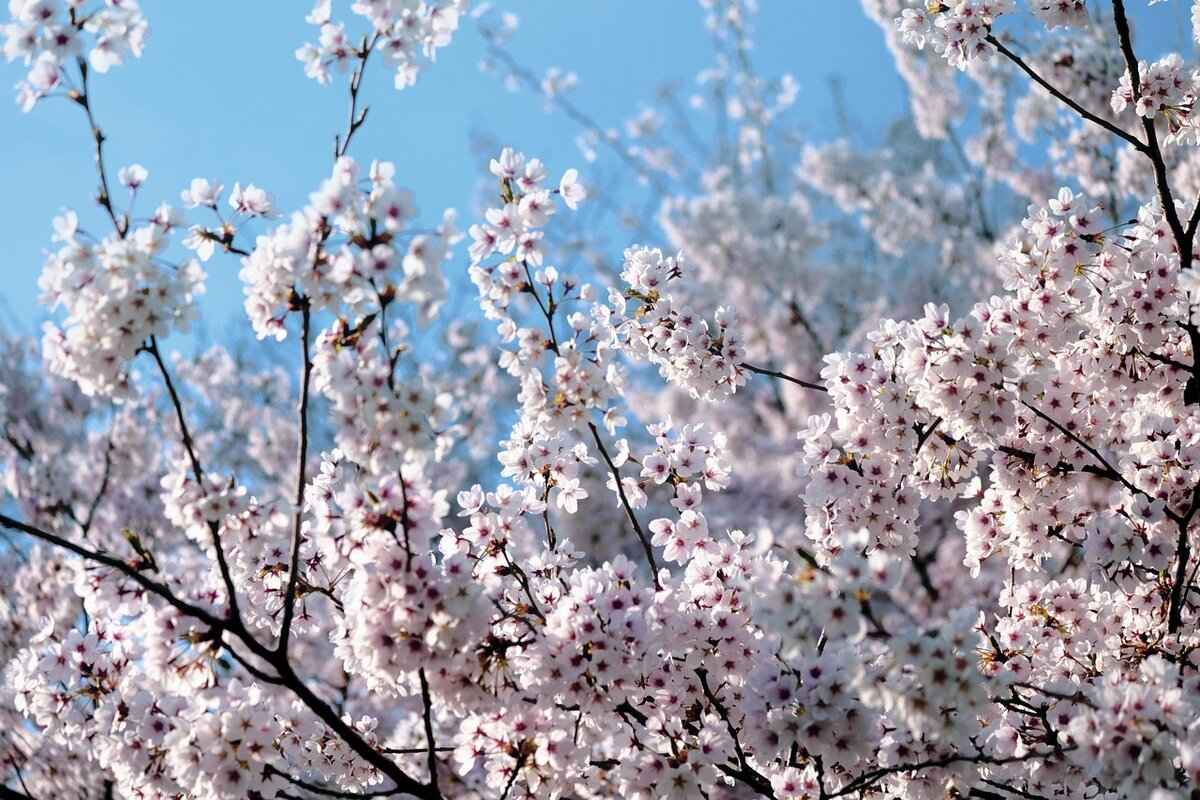
How Do Bento Boxes Enhance the Hanami Experience?
During the enchanting season of Hanami, when cherry blossoms bloom across Japan, bento boxes emerge as an essential part of the celebration. These beautifully arranged meals not only provide a variety of foods in one container but also reflect the artistry of Japanese culinary traditions. Let’s delve deeper into how bento boxes enhance the Hanami experience.
Bento boxes are more than just a meal; they are a culinary masterpiece that showcases the meticulous attention to detail typical of Japanese cuisine. Each component is carefully selected to represent the season, with a focus on freshness and presentation. This aligns perfectly with the Hanami spirit, where beauty and nature are celebrated.
The assembly of a Hanami bento box is an art form in itself. Traditionally, a bento box includes:
- Rice: Often shaped into decorative forms, rice serves as the base of the meal.
- Protein: Items like grilled fish, chicken teriyaki, or tofu add flavor and substance.
- Pickled Vegetables: These provide a tangy contrast and are visually appealing.
- Seasonal Ingredients: Fresh fruits and vegetables symbolize the beauty of spring.
This thoughtful arrangement not only pleases the palate but also delights the eyes, making every bento box a feast for the senses.
Bento boxes hold deep cultural significance in Japan. They represent thoughtfulness and care, as families often prepare them for picnics, especially during Hanami. The practice of sharing food from a bento box strengthens bonds among friends and family, making it a social experience as much as a culinary one. Moreover, the variety found in a bento box reflects the principle of balance in Japanese cuisine, where taste, texture, and color are harmoniously combined.
Common ingredients in Hanami bento boxes include:
- Onigiri: Rice balls often filled with umeboshi (pickled plum) or salmon.
- Tempura: Lightly battered and fried vegetables or seafood add a crunchy texture.
- Seasonal Fruits: Strawberries, cherries, and other fruits symbolize the season’s bounty.
Each ingredient is chosen not just for flavor but also for its seasonal relevance, making the bento box a celebration of spring.
Creating a Hanami bento box at home can be a delightful activity. Here are some tips:
1. Choose a variety of colors and textures for visual appeal.2. Incorporate seasonal ingredients for freshness.3. Use small containers to separate different items.4. Experiment with shapes—try molding rice into heart or flower shapes.5. Don’t forget to include a sweet treat, like sakura mochi, to finish off the meal.
By assembling your own bento box, you can bring the spirit of Hanami to your home, allowing you to enjoy the beauty of cherry blossoms even if you can’t be outdoors.
Across Japan, many parks and festivals offer exquisite bento boxes during the cherry blossom season. Notable locations include:
- Ueno Park: Famous for its cherry blossoms and numerous food stalls.
- Shinjuku Gyoen: Offers a picturesque setting for enjoying homemade and store-bought bento.
- Maruyama Park: Known for its vibrant atmosphere and delicious bento options.
These locations not only allow you to indulge in delicious bento boxes but also immerse you in the Hanami experience, surrounded by the breathtaking beauty of blooming cherry trees.
What Are Common Ingredients in Hanami Bento Boxes?
During the enchanting season of Hanami, the celebration of cherry blossoms in Japan, the culinary experience is as vibrant as the blossoms themselves. One of the most beloved aspects of this festival is the bento box, which offers a delightful assortment of flavors and colors that reflect the beauty of spring. In this section, we will explore the common ingredients found in Hanami bento boxes and what makes them a staple for picnicking under the blooming sakura trees.
Hanami bento boxes are not just meals; they are a feast for the eyes and the palate. Typically, these boxes contain a variety of ingredients that are both delicious and visually appealing. Here are some key components:
- Rice: The foundation of any bento box, rice is often seasoned with vinegar or sesame to add flavor. Some variations include chirashi sushi, where the rice is topped with colorful ingredients.
- Pickled Vegetables: Known as tsukemono, these pickled vegetables provide a tangy contrast to the rich flavors in the bento. Common varieties include pickled radishes and cucumber.
- Seasonal Ingredients: The use of seasonal produce is essential in Hanami bento boxes. Ingredients such as asparagus, cherry blossoms, and spring greens are commonly included to celebrate the season.
- Protein: A variety of proteins such as grilled chicken, fish, or tofu are often included. These proteins are typically marinated or seasoned to enhance their flavors.
- Egg: A common addition is the tamago, a sweet, layered omelet that adds both texture and a touch of sweetness to the bento box.
- Garnishes: To elevate the visual appeal, garnishes such as shiso leaves, sesame seeds, and edible flowers are often used.
The careful selection of these ingredients not only creates a balanced meal but also reflects the artistry of Japanese cuisine. Each component is thoughtfully arranged, making the bento box a true representation of seasonal beauty and culinary skill.
The combination of flavors and textures in Hanami bento boxes enhances the overall experience of enjoying food under the cherry blossoms. The vibrant colors of the ingredients mirror the delicate pinks and whites of the blossoms, creating a harmonious visual feast. Additionally, the variety of tastes—from savory to sweet—ensures that there is something for everyone to enjoy.
Moreover, preparing a bento box can be a delightful activity that brings families and friends together, allowing them to share in the joy of Hanami. As the cherry blossoms bloom and the weather warms, these bento boxes become a symbol of springtime celebration, fostering a sense of community and appreciation for nature’s beauty.
In conclusion, Hanami bento boxes are a quintessential part of the cherry blossom festival, showcasing a variety of ingredients that are both delicious and beautiful. By understanding the common components of these boxes, one can appreciate the thoughtfulness and tradition behind this beloved Japanese practice.
How Can You Make a Hanami Bento Box at Home?
Creating a Hanami bento box at home is a delightful way to celebrate the beauty of cherry blossoms. This traditional Japanese custom of enjoying food under blooming sakura trees can be replicated in your own kitchen. With a few tips and some creativity, you can assemble a bento that not only looks stunning but also captures the essence of the Hanami season. Here’s how to make your own Hanami bento box.
To start, you’ll need to gather a variety of ingredients that reflect the seasonal flavors of spring. Here are some key components to consider:
- Rice: Use short-grain Japanese rice. You can prepare it plain or season it with sakura (cherry blossom) flavoring for an authentic touch.
- Protein: Options include grilled chicken, teriyaki salmon, or even tofu for a vegetarian option.
- Vegetables: Incorporate seasonal vegetables like asparagus, snap peas, and pickled radishes for color and crunch.
- Fruits: Add fresh fruits such as strawberries or cherries to enhance the sweetness of your bento.
- Dango: Include some traditional dango for a sweet treat to balance the savory elements.
Once you have your ingredients ready, it’s time to assemble your bento box. Here are some steps to guide you:
1. Start with a base of rice. Use a mold to shape it into a cute form if desired.2. Arrange your protein choice next to the rice.3. Neatly place your vegetables and fruits in separate sections to create a colorful presentation.4. Don’t forget to add a small container of soy sauce or dipping sauce for added flavor.5. Finally, include the dango skewers as a sweet finish.
Presentation is key in Japanese cuisine. Here are some tips to make your bento box visually appealing:
- Color Contrast: Use a variety of colors to make the box pop. Think green, pink, yellow, and white.
- Layering: Layer ingredients to create depth and dimension in your bento box.
- Garnishes: Add edible flowers or herbs to enhance the aesthetic appeal.
Once your bento box is assembled, it’s important to store it properly if you’re not eating it right away. Keep it in a cool place or use an insulated bag to maintain freshness. When you’re ready to enjoy your meal, take it to a local park or even your backyard to embrace the spirit of Hanami.
Creating a Hanami bento box at home not only allows you to celebrate the cherry blossom season but also offers a wonderful opportunity to explore Japanese culinary traditions. With a little effort and creativity, you can enjoy a beautiful and delicious meal that embodies the joy of this special time of year.
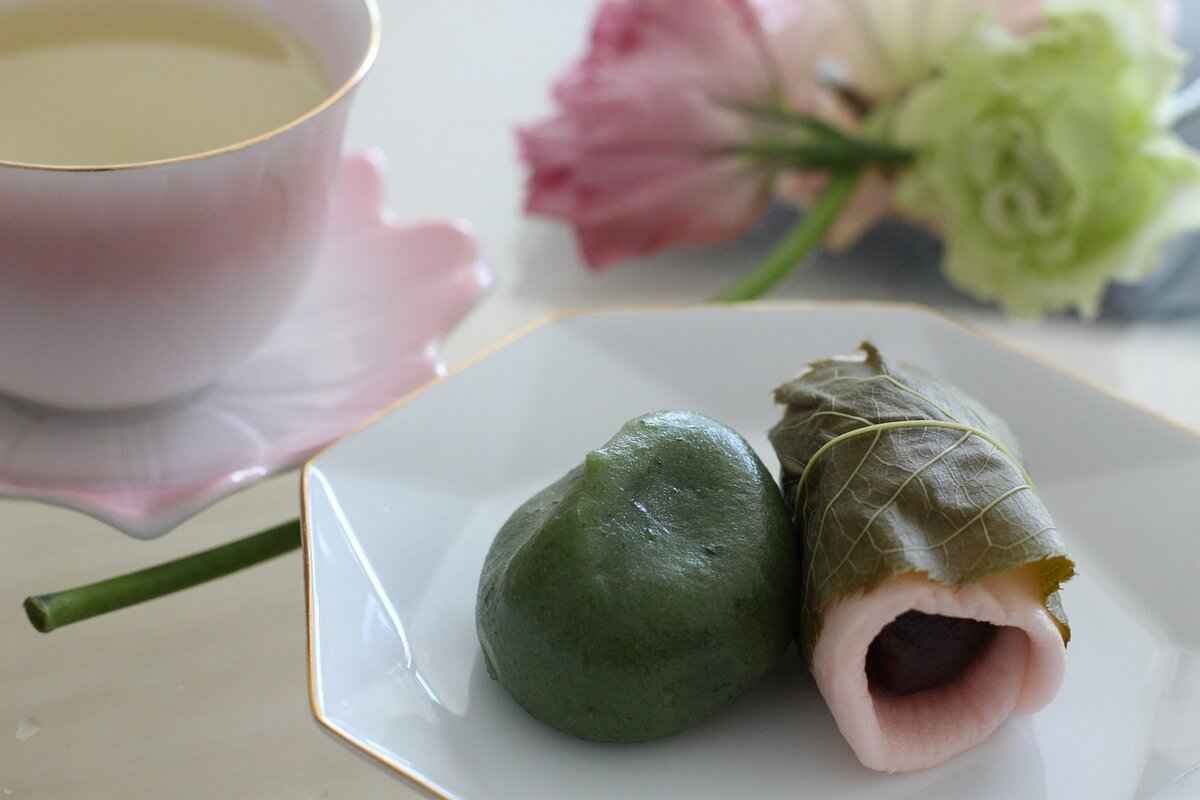
What is the Role of Dango in Hanami Celebrations?
Dango, a traditional Japanese rice dumpling, holds a special place in the hearts of many during the Hanami season, which celebrates the beauty of cherry blossoms. This delightful treat is not only a favorite snack but also a symbol of togetherness and joy during this festive time. In this article, we will explore the cultural significance of dango, the various types enjoyed during Hanami, and how it enhances the overall experience of this beautiful festival.
Dango is more than just a delicious rice dumpling; it embodies the spirit of Hanami. Traditionally served on skewers, these dumplings are often enjoyed in parks while admiring the blooming cherry blossoms. The act of sharing dango among friends and family fosters a sense of community and celebration, making it an integral part of the Hanami experience.
- Hanami Dango: This is a special type of dango often associated with the cherry blossom season. It features three colors—pink, white, and green—symbolizing the beauty of spring.
- Soy Sauce Dango: Coated in a sweet soy sauce glaze, this savory variety is popular for its rich flavor, making it a favorite among many.
- Sakura Dango: Infused with the essence of cherry blossoms, this version is not only visually appealing but also offers a unique floral taste that perfectly complements the Hanami atmosphere.
During Hanami, dango is typically served on bamboo skewers, making it easy to share and enjoy in a relaxed picnic setting. Families and friends gather under the cherry trees, where they indulge in dango along with other seasonal treats. The simple act of eating dango together creates a sense of unity and joy, enhancing the overall experience of the festival.
Dango has deep cultural roots in Japan, often associated with various festivals and celebrations beyond Hanami. It represents the changing seasons and the importance of nature in Japanese life. The preparation and enjoyment of dango reflect traditional culinary practices passed down through generations, emphasizing the significance of food in cultural identity.
During the cherry blossom season, dango can be found at numerous food stalls in parks and festivals across Japan. Local vendors often sell freshly made dango, showcasing regional variations and flavors. Some popular locations include:
- Ueno Park: Known for its vibrant cherry blossoms, this park also offers a wide array of food stalls specializing in dango.
- Shinjuku Gyoen: A beautiful garden where visitors can enjoy dango while surrounded by stunning cherry trees.
- Maruyama Park: This park in Kyoto is famous for its cherry blossoms and delicious dango sold by local vendors.
In conclusion, dango plays a vital role in the Hanami celebrations, symbolizing togetherness and the joy of spring. Its various flavors and traditional serving methods enhance the festive atmosphere, making it a beloved treat during this beautiful season. Whether enjoyed in a park or at a festival, dango remains a cherished part of Japanese culture, connecting people through the simple pleasure of food.
What Flavors of Dango are Most Popular?
During the vibrant season of cherry blossoms, known as Hanami, one of the most cherished treats is dango. This traditional Japanese rice dumpling is not only a delightful snack but also a symbol of the season, enjoyed by many while picnicking under the blooming sakura trees. In this section, we will explore the various flavors of dango, their significance, and how they are typically served during this beautiful festival.
Dango comes in an array of flavors, each offering a unique taste experience. Some of the most popular varieties include:
- Sweet Soy Sauce (Mitchell Dango): This classic flavor features a glaze of sweet soy sauce, giving it a rich and savory taste that complements the chewy texture of the dumpling.
- Sakura Dango: Infused with the delicate flavor of cherry blossoms, sakura dango is often colored pink and is a seasonal favorite during Hanami.
- Green Tea (Matcha Dango): This variety incorporates matcha powder, providing a slightly bitter yet refreshing flavor that balances well with the sweetness of other dango types.
- Red Bean (Anko Dango): Topped or filled with sweet red bean paste, this dango offers a delightful contrast of textures and flavors.
- Sesame Dango: Coated with crushed sesame seeds, this variation adds a nutty flavor and a unique crunch to the soft dumpling.
Dango is traditionally served on skewers, making it easy to share and enjoy with friends and family during Hanami. This communal aspect of dango consumption enhances the festive atmosphere, as people gather to appreciate the beauty of cherry blossoms while indulging in delicious treats. The skewers often hold three to five dumplings, creating a visually appealing presentation that reflects the vibrant colors of the season.
Beyond its delightful taste, dango holds cultural significance during Hanami. It symbolizes unity and togetherness, as families and friends come together to celebrate the fleeting beauty of cherry blossoms. The act of sharing dango while enjoying the scenery fosters a sense of community and connection. Additionally, certain types of dango are associated with specific festivals and traditions, further enhancing its role in Japanese culture.
During the cherry blossom season, dango can be found at numerous food stalls and vendors in parks across Japan. Popular locations, such as Ueno Park in Tokyo or Maruyama Park in Kyoto, often feature vendors selling freshly made dango, allowing visitors to enjoy this traditional treat amidst the stunning cherry blossoms. Many local shops also offer unique variations of dango, showcasing regional flavors and specialties.
As you explore the enchanting world of Hanami, indulging in the delightful flavors of dango will undoubtedly enhance your experience. Whether you prefer the sweet soy sauce glaze or the aromatic sakura variety, dango remains a beloved staple that captures the essence of this beautiful season.
How is Dango Traditionally Served During Hanami?
During the enchanting season of Hanami, dango emerges as a beloved treat that brings people together under the blooming cherry blossoms. This traditional Japanese rice dumpling, often served on skewers, is not just a delightful snack but also a symbol of community and celebration. The act of sharing dango enhances the festive atmosphere, making it an integral part of the Hanami experience.
Dango is traditionally made from glutinous rice flour, giving it a chewy texture that is both satisfying and enjoyable. It is typically shaped into small round balls and skewered, making it easy to share among friends and family during picnics. The simplicity of dango allows it to be paired with various toppings and sauces, enhancing its flavor and appeal.
During Hanami, dango is often served in a variety of ways that highlight its versatility:
- Skewered Dango: The most common presentation is three to five dango balls on a skewer, often grilled and brushed with a sweet soy sauce glaze.
- Colorful Variations: Dango can be found in an array of colors, each representing different flavors such as matcha, sakura, and sweet red bean paste. This colorful presentation adds to the visual appeal of Hanami picnics.
- Accompanied by Seasonal Treats: Dango is frequently enjoyed alongside other Hanami favorites like sakura mochi and bento boxes, creating a diverse and festive spread.
The act of sharing dango is more than just a culinary experience; it fosters a sense of togetherness among participants. Friends and families often gather to enjoy dango while engaging in lively conversations, making it a social centerpiece during Hanami. The warm, inviting aroma of grilled dango wafting through the air adds to the celebratory ambiance, inviting others to join in the fun.
Making dango is a cherished tradition that can involve the whole family. The process typically includes:
1. Mixing glutinous rice flour with water to form a smooth dough.2. Shaping the dough into small balls.3. Boiling the balls until they float, indicating they are cooked.4. Skewering and optionally grilling the dango before serving.
This hands-on approach not only creates delicious treats but also strengthens family bonds and traditions, making the preparation of dango a significant part of the Hanami experience.
Throughout Japan, dango can be found at various parks and festivals celebrating Hanami. Local vendors often set up stalls offering freshly made dango, allowing visitors to indulge in this delightful treat while enjoying the breathtaking cherry blossoms. Major parks like Ueno Park in Tokyo and Maruyama Park in Kyoto are popular spots where dango is readily available, ensuring that everyone can partake in this beloved tradition.
In conclusion, dango is much more than just a snack during Hanami; it embodies the spirit of the season, encouraging sharing and connection among loved ones. Its traditional preparation and serving methods enhance the overall experience of celebrating cherry blossoms, making it an essential part of this beautiful festival.
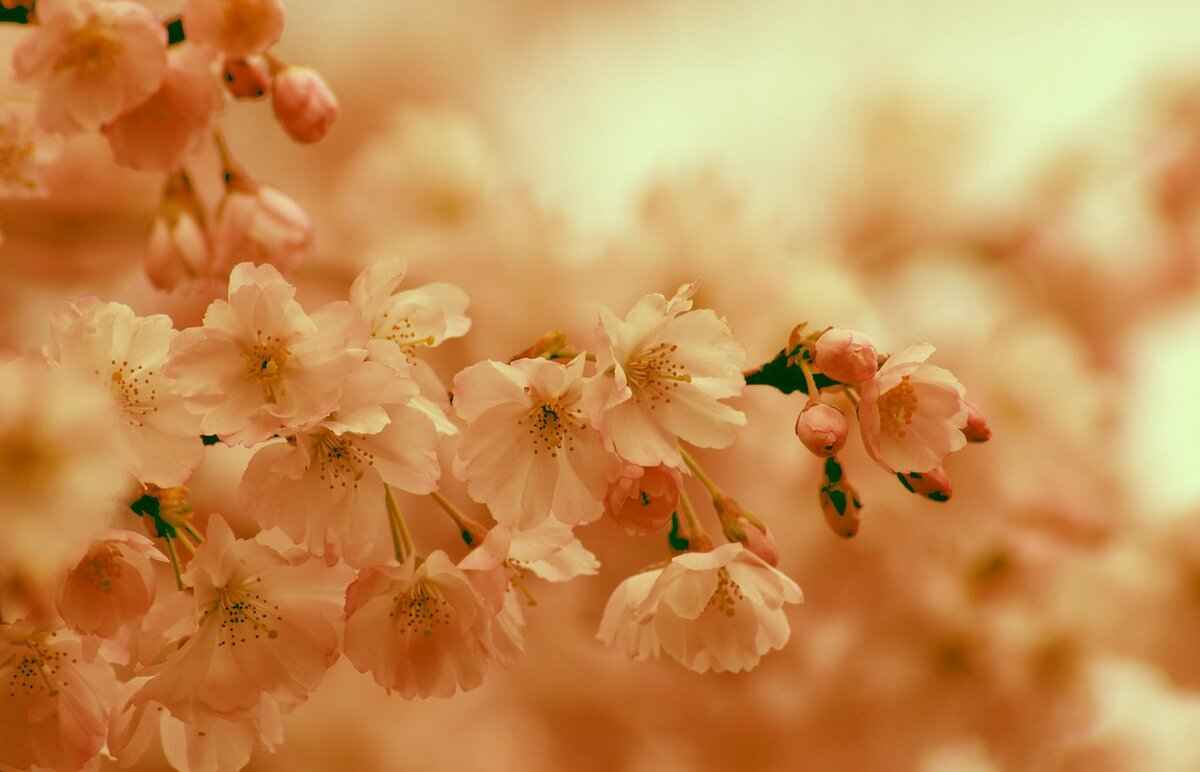
Where to Experience Hanami and Try These Foods?
Experiencing Hanami is an enchanting journey that transcends mere food; it is about immersing oneself in the breathtaking beauty of cherry blossoms while savoring delicious seasonal treats. In Japan, the arrival of spring brings a flurry of festivities, and the parks become vibrant gathering spots for locals and tourists alike. Here, we will explore the best locations and festivals where you can indulge in the culinary delights of Hanami amidst the stunning sakura scenery.
Japan boasts numerous parks renowned for their cherry blossom displays. Here are some of the most popular destinations:
- Ueno Park (Tokyo): This iconic park features over 1,000 cherry trees, making it a prime location for Hanami picnics. Visitors can enjoy street food from numerous vendors while soaking in the beautiful blossoms.
- Hanami Park (Kyoto): Known for its serene atmosphere, Hanami Park offers picturesque views of cherry blossoms along with traditional tea houses where you can enjoy matcha and sweets.
- Osaka Castle Park (Osaka): With its historical backdrop, this park is not only a great spot for cherry viewing but also hosts food stalls offering local delicacies.
- Chidorigafuchi Park (Tokyo): This scenic spot features a moat lined with cherry trees, ideal for boat rides while enjoying Hanami treats.
Many local festivals celebrate the arrival of cherry blossoms with food stalls offering a variety of seasonal delicacies. Some notable festivals include:
- Sumida Park Cherry Blossom Festival (Tokyo): This festival features food vendors serving everything from sakura mochi to grilled dango, creating a vibrant atmosphere for visitors.
- Kyoto Hanami Festival (Kyoto): A celebration that includes traditional performances alongside food stalls offering local specialties, making it a perfect blend of culture and cuisine.
- Osaka Hanami Festival (Osaka): Enjoy local street food while experiencing cultural events, including dance performances and craft exhibitions.
While enjoying the cherry blossoms, a variety of foods enhance the Hanami experience. Here are some must-try dishes:
- Sakura Mochi: This sweet rice cake wrapped in cherry blossom leaves is a seasonal favorite.
- Dango: These colorful rice dumplings are often served on skewers and come in various flavors, making them a delightful treat.
- Bento Boxes: Packed with seasonal ingredients, bento boxes are perfect for picnics under the cherry trees.
- Seasonal Fruits: Fresh fruits, particularly strawberries and cherries, are popular additions to Hanami picnics.
In conclusion, experiencing Hanami is about more than just the food; it’s a celebration of nature, culture, and community. By visiting these beautiful parks and participating in local festivals, you can fully immerse yourself in the spirit of spring while enjoying an array of delightful culinary offerings. So grab your friends, pack a bento box, and head out to witness the stunning cherry blossoms this season!
What are the Best Parks for Hanami in Japan?
Japan’s cherry blossom season, known as Sakura, is a breathtaking spectacle that attracts visitors from around the globe. The practice of Hanami, or flower viewing, is deeply rooted in Japanese culture, and parks across the country serve as prime locations for this tradition. Each park offers unique experiences, making them ideal spots for both locals and tourists to gather and celebrate the fleeting beauty of cherry blossoms.
When it comes to the best parks for Hanami, several locations stand out due to their stunning cherry blossom displays and vibrant atmospheres. Here are some of the top parks to consider:
- Ueno Park – Located in Tokyo, Ueno Park is one of the most famous cherry blossom viewing spots in Japan. With over 1,000 cherry trees lining its pathways, visitors can enjoy a picturesque view, along with various museums and a zoo.
- Shinjuku Gyoen – This expansive park in Tokyo features a mix of traditional Japanese, English, and French landscaping. The cherry blossoms bloom in multiple varieties, making it a delightful place for a leisurely stroll and picnic.
- Maruyama Park – Situated in Kyoto, Maruyama Park is a popular destination for Hanami. The park is known for its iconic weeping cherry tree, which is beautifully illuminated at night, creating a magical atmosphere.
- Hirosaki Park – Famous for its cherry blossom festival, Hirosaki Park in Aomori is home to over 2,500 cherry trees. The park’s historic castle provides a stunning backdrop for visitors to enjoy the blossoms.
- Osaka Castle Park – This park surrounds the historic Osaka Castle and features over 4,000 cherry trees. The combination of the castle’s grandeur and the blooming sakura creates an unforgettable experience.
Each of these parks provides a unique experience during the cherry blossom season. For instance, Ueno Park hosts lively festivals with food stalls, live music, and cultural performances, making it a vibrant hub for Hanami enthusiasts. Shinjuku Gyoen, on the other hand, offers a tranquil escape from the city’s hustle and bustle, allowing visitors to appreciate the beauty of nature in a serene environment.
In Maruyama Park, the nighttime illuminations of cherry blossoms create a romantic setting, perfect for couples and families alike. Hirosaki Park’s festival features traditional performances, local food vendors, and even a chance to participate in guided tours that educate visitors about the history and significance of the cherry blossoms. Meanwhile, Osaka Castle Park combines history and nature, providing an opportunity to explore the castle’s grounds while enjoying the stunning sakura.
Many parks host festivals during the cherry blossom season, enhancing the Hanami experience. For example, Hirosaki Park’s Cherry Blossom Festival is a highlight, featuring food stalls, local crafts, and cultural performances. Similarly, Ueno Park’s Hanami festivities include traditional Japanese music and dance, creating a lively atmosphere for all attendees.
These festivals not only celebrate the beauty of cherry blossoms but also showcase Japan’s rich cultural heritage. Visitors can indulge in seasonal delicacies, participate in traditional games, and enjoy various forms of entertainment, making Hanami a truly immersive experience.
Whether you are seeking a peaceful picnic spot or a lively festival atmosphere, Japan’s parks during the cherry blossom season offer something for everyone. Embrace the beauty of sakura and create unforgettable memories in these enchanting locations.
Are There Any Festivals Celebrating Hanami Foods?
Hanami, the traditional Japanese practice of enjoying the beauty of cherry blossoms, is not just about the stunning views; it is also a vibrant celebration of food. Many festivals across Japan celebrate Hanami with an array of food stalls offering local delicacies. These events provide a unique opportunity to indulge in seasonal treats while basking in the breathtaking beauty of blooming cherry trees.
Several festivals throughout Japan are renowned for their Hanami celebrations. One of the most notable is the Ueno Park Cherry Blossom Festival in Tokyo, where visitors can savor delicious street food while surrounded by thousands of cherry blossoms. Another popular event is the Hirosaki Cherry Blossom Festival in Aomori, known for its picturesque castle backdrop and a wide variety of food stalls offering local specialties.
At Hanami festivals, you can find a delightful assortment of traditional and contemporary Japanese foods. Sakura mochi, a sweet rice cake wrapped in cherry blossom leaves, is a must-try delicacy. Additionally, you can enjoy dango, which are skewered rice dumplings often served with sweet soy sauce or covered in seasonal flavors.
- Bento Boxes: These are a staple at Hanami festivals, offering a variety of beautifully arranged foods.
- Seasonal Fruits: Fresh fruits like strawberries and cherries are popular, celebrating the season’s bounty.
- Takoyaki: These savory octopus balls are a festival favorite, often served hot and topped with sauces.
Food stalls are integral to the Hanami experience, as they create a festive atmosphere that enhances the overall enjoyment of the cherry blossom season. These stalls not only provide delicious food but also foster a sense of community among festival-goers. Sharing meals with friends and family while surrounded by the beauty of cherry blossoms creates lasting memories.
Many Hanami festivals prioritize local delicacies, showcasing the unique flavors of the region. For example, the Takayama Spring Festival features local Hida beef and fresh produce, highlighting the area’s culinary heritage. This emphasis on local foods not only supports regional farmers and vendors but also allows visitors to experience the authentic tastes of Japan.
Experiencing Hanami festivals is a delightful way to immerse yourself in Japanese culture. Some of the best locations include:
- Shinjuku Gyoen National Garden, Tokyo: Known for its expansive cherry blossom trees and picnic-friendly atmosphere.
- Maruyama Park, Kyoto: A historic park that hosts a vibrant Hanami festival with food stalls and entertainment.
- Cherry Blossom Festival at Chidorigafuchi, Tokyo: Offers stunning views of cherry blossoms along the moat, with food vendors nearby.
In conclusion, Hanami festivals are a celebration of both nature and culinary delights. With a rich variety of foods available, these events offer a unique way to enjoy the beauty of cherry blossoms while indulging in traditional and modern Japanese delicacies. Whether you are a local or a visitor, participating in these festivals is a fantastic way to experience the essence of Japan during this captivating season.
Frequently Asked Questions
- What are the traditional foods for Hanami?
During Hanami, you’ll find iconic dishes like hanami bento, sakura mochi, and dango that reflect Japan’s rich culinary heritage. These foods are essential for enjoying a delightful picnic under the stunning cherry blossoms.
- Why is sakura mochi so popular during Hanami?
Sakura mochi is a beloved treat because it embodies the essence of spring! Wrapped in cherry blossom leaves, this sweet rice cake not only tastes amazing but also carries a cultural significance that enhances the festive atmosphere.
- How can I make a Hanami bento box at home?
Making a Hanami bento box is super fun! Start with a base of rice, then add pickled veggies, seasonal fruits, and maybe some dango for a sweet touch. The key is to make it colorful and appealing, just like the cherry blossoms!
- What flavors of dango are most popular?
Dango comes in a variety of flavors, but the most popular ones include sweet soy sauce and sakura. They’re often served on skewers, making them perfect for sharing during your Hanami picnics.
- Where can I experience Hanami and try these foods?
Japan has countless parks famous for their cherry blossoms, like Ueno Park and Shinjuku Gyoen. Many festivals also celebrate Hanami with delicious food stalls where you can indulge in seasonal treats!


